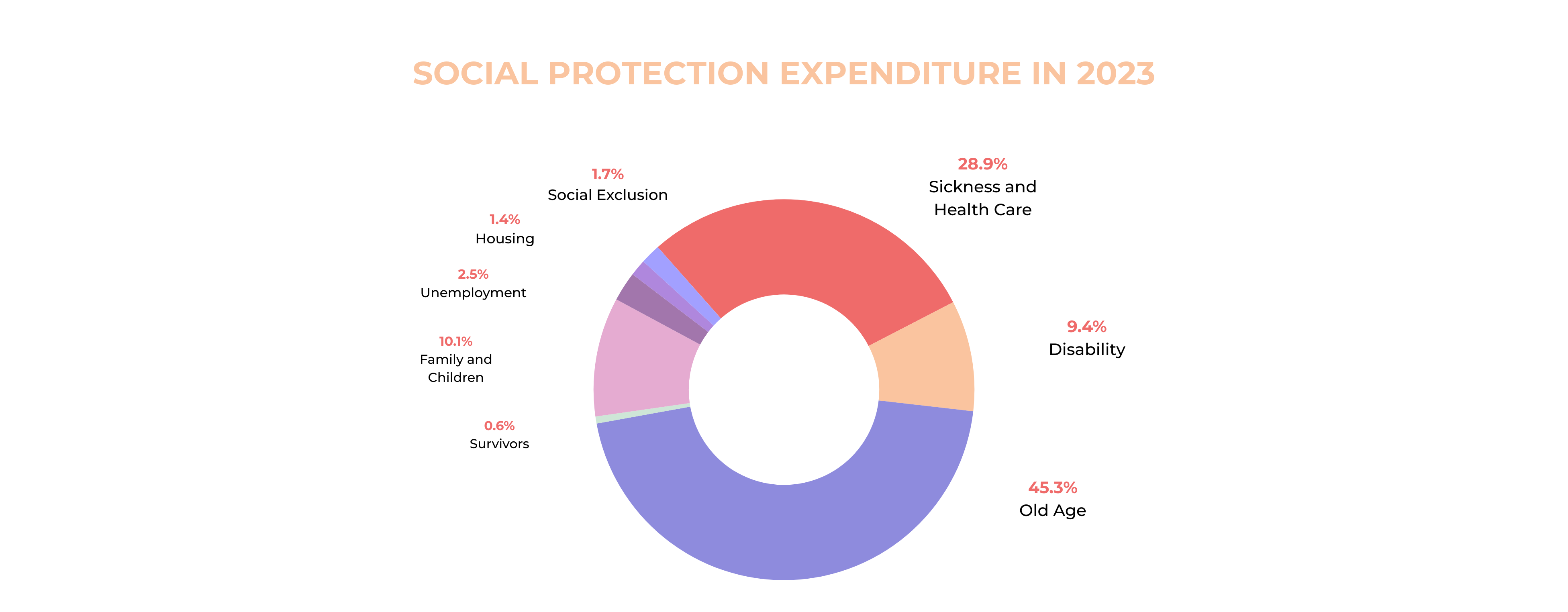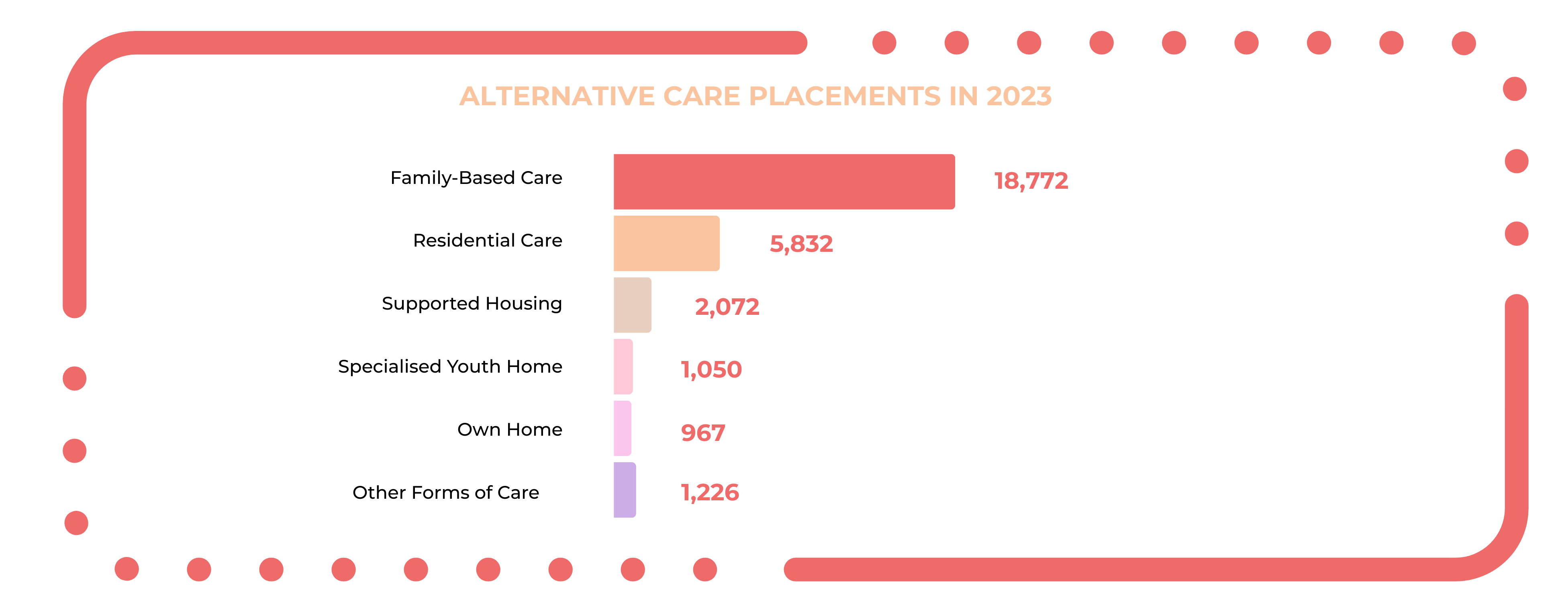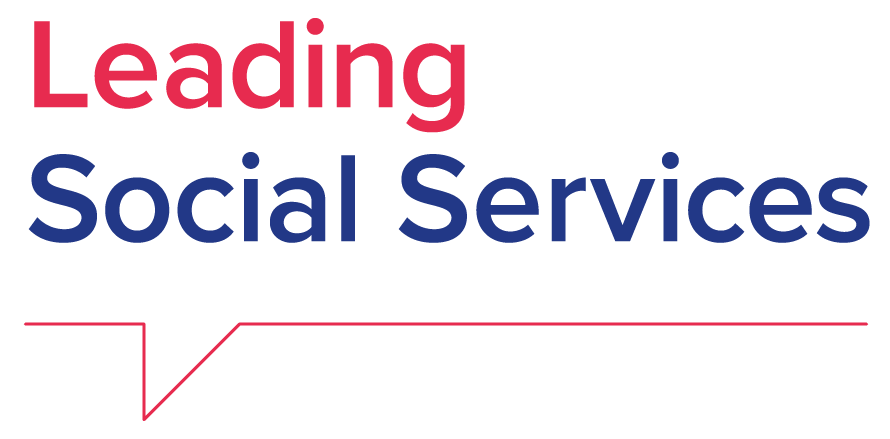Recommendation
Sweden should ensure that any future legislative changes directly or indirectly aimed at social services do not conflict with the three fundamental principles upon which the new Social Services Act is based: prevention, accessibility, and knowledge-based interventions.
Social Services Legislation
Right to access social services
✅ On 1 July 2025, the Social Services Act (2001:453), which recognises people’s right to access social services, was replaced by new legislation, the Social Services Act (2024/25:89). This Act emphasises preventive work and knowledge-based social work and gives greater access to social services without the need to make applications or undergo assessments.
Definition of social services
✅ Article 1 of the Social Services Act (2024/25:89) defines social services as activities carried out under this law and under the following laws:
- Act on the Care of People with Addictions in Certain Cases (1988:870).
- Act with Special Provisions on the Care of Young People (1990:52).
- Act on the Placement of Children in Protected Accommodation (2024:79).
Additionally, it includes activities that a social committee in a municipality or the National Board of Institutional Care shall conduct according to another law or regulation.
Activities carried out by the National Board of Institutional Care under the Education Act (2010:800) and supervision or other tasks performed by the Health and Social Care Inspectorate under this law are not classified as social services.
Social services provide support to vulnerable individuals and those facing difficulties, and they include:
- Child and family welfare.
- Support for adults with mental health conditions and alcohol and drug dependency.
- Assistance for crime victims, interpersonal violence, homelessness, debt, and financial hardship.
- Care for older people.
- Care for people with disabilities.
- Crime prevention.
National social services catalogue
❌ Sweden does not have an official catalogue of social services available at the national level. However, in addition to the legislation outlining the services to be provided, the National Board of Health and Welfare provides information on its website about services that can be provided for certain categories of people, such as older people and children and young people, as well as the possibility to calculate the level of financial assistance one might be entitled to.
Furthermore, municipalities develop their own guidelines for the provision of services based on the legislation and also provide information on which services are available on their websites and through information to other stakeholders and partners.
National social services strategic plan
✅ Sweden’s current strategy concerning social services is outlined in the Social Services Act (2024/25:89), which presents six defined strategic areas:
- Promote equal living conditions.
- Have a clearer child perspective.
- Become more preventive and easily accessible.
- Be given the opportunity to provide interventions without means testing.
- Contribute to community planning and plan initiatives in all areas of activity.
- Be knowledge-based and of good quality.
The government has allocated the following funding for implementation and restructuring over four years:
- 2025: SEK 1.2 billion.
- 2026-2028: SEK 2.2 billion / year (Source: SKR).
In addition to the new Social Services Act, there are multiple national strategic plans targeting specific groups and accompanied by financial support for implementation by the municipalities.
Responsibilities of national, regional, and local authorities
Social services in Sweden are a collaborative effort involving national, regional, and local levels of government, each with distinct but interconnected responsibilities to ensure comprehensive and effective support for all citizens. These responsibilities are defined in the new social services legislation, as follows.
At the national level, social services are primarily governed by the Ministry of Health and Social Affairs. The national government establishes the overarching policies, legislation, and guidelines that shape the country's social services. This includes ensuring compliance with laws such as the Social Services Act, which mandates the provision of social support to all citizens. The government also allocates funding, monitors performance, and conducts evaluations to ensure the effectiveness and quality of social services nationwide.
At the regional level, there are 21 county councils or regions primarily responsible for health care services and coordinating and supporting social services within their jurisdictions. They work closely with local municipalities to ensure that social services are accessible, coherent, and integrated with health care services. They also provide specialised services and support for more complex social issues that require regional cooperation.
At the local level, 290 municipalities are responsible for assessing individual needs, planning and delivering tailored services, and ensuring the support meets the local population's demands. They also have the authority to levy taxes to fund these services, ensuring they can adequately support their communities.
Social Services Expenditure
As of 1 January 2024, Sweden’s population was 10,551,707 people (Source: Eurostat). That same year, the country’s gross domestic product (at market prices) reached €563,962.7 million (Source: Eurostat).
Sweden’s 2023 total social protection expenditure (including both cash benefits and benefits in kind) was SEK 1,710,989 million, of which:
- Sickness and health care: SEK 485,762 million.
- Disability: SEK 157,832 million.
- Old age: SEK 762,058 million.
- Survivors: SEK 10,766 million.
- Family and children: SEK 169,149 million.
- Unemployment: SEK 42,115 million.
- Housing: SEK 23,858 million.
- Social exclusion: SEK 29,226 million.
- Administration and other costs: SEK 30,223 million (Source: Statistics Sweden).

Social Services Coverage
Social Services Workforce
In 2020, 43,460 social workers were employed in Sweden:
- 85% in the public sector.
- 12% in the for-profit sector.
- 4% in the non-profit sector (Source: Shanks & Lundström).
As of November 2024, 29,000 social workers (socialsekreterare) were employed in municipalities, along with 12,100 social care workers. The total figure of 41,100 does not include numbers from private organisations and NGOs (Source: SKR).
Long-term Care Services for Older People
Population aged 65+
As of 1 January 2024, 20.6% of the population or 2,174,752 people were aged 65 and over (Source: Eurostat).
In 2024, 428,113 people aged 65+ were recorded as receiving some form of support, including multiple services during the year (Source: National Board of Health and Welfare).
Residential care facilities, day care centres, home care services, personal assistants, and telecare services
In 2024, there were more than 71,732 places in residential care homes run and financed by municipalities, and more than 16,689 places in residential care homes that municipalities bought from private providers (Source: National Board of Housing, Building and Planning).
In 2024, the following number of people aged 65+ received support as follows:
- Security alarm: 290,297.
- Home help services in ordinary housing: 225,347.
- Special housing: 111,636.
- Meal distribution: 74,139.
- Accompanying service:38,376.
- Short-term housing: 35,268.
- Daytime activities: 18,211.
- Respitecare: 12,522.
- Living support: 4,784.
- Contact person / family: 1,854.
- Other assistance: 2,646 (Source: National Board of Health and Welfare).
In 2024, it took an average of 62 days from an application being made to the first offered move-in date for special housing for older people (Source: KOLADA).
In 2024, people aged 65+ received an average of 32 hours of registered home care per month (Source: KOLADA).
Reforms
The transition to ‘good and close care’ (god och nära vård), underway since 2018, aims to create a care system that is accessible, coordinated, and tailored to the individual's needs. It emphasises a holistic approach, considering not only the physical health but also the social, emotional, and psychological wellbeing of the individual.
Long-term Care Services for Adults with Disabilities
Population aged 18+ with disabilities
In 2024, 18.9% of the population aged 16-64 had some or a severe level of activity limitation (Source: Eurostat).
Residential care facilities, day care centres, home care services, personal assistants, and telecare services
As of 14 May 2025, 33,009 disability residential care places were available in the Health and Social Care Inspectorate’s register (Source: Health and Social Care Inspectorate – confidential).
In 2024, 2,101 disability day care places were available, of which 1,856 were run and financed by the municipalities and 245 were run by private companies but financed by the municipalities (Source: National Board of Health and Welfare).
As of 31 October 2024, the following number of people with disabilities aged 0-64 received support under the Social Services Act (2001:453):
- Security alarm: 12,505.
- Home help services in ordinary housing: 14,592.
- Special housing: 4,971.
- Meal distribution: 2,572.
- Accompanying service: 3,122.
- Short-term housing: 718.
- Daytime activities: 5,029.
- Respite care: 387.
- Living support: 33,144,
- Contact person / family: 4,317.
- Other assistance: 2,746 (Source: National Board of Health and Welfare).
Furthermore, as of 1 October 2024, 81,041 people with disabilities of all ages received support under the Act on Support and Services for Certain People with Disabilities (1993:387). The following number of services were provided to people aged 23-64:
- Personal assistance: 2,256.
- Accompanying service: 3,111.
- Contact person: 11,818.
- Relief service at home: 180.
- Short stay away from home: 842.
- Residence for adults: 24,979.
- Daily activities: 39,055 (Source: National Board of Health and Welfare).
In 2024, it took an average of 111 days from the decision to the first offered move-in date for special housing for people with disabilities (Source: KOLADA).
Child Protection
In 2023, 25,748 children and young people under 20 years of age received 24-hour support. Of these, 5,755 were aged 18-20.
The following number of placements took place in 2023, noting that a child can be placed in several types of placements during a year:
- Family-based care: 18,772:
- Residential care: 5,832.
- Supported housing: 2,072.
- Specialised youth home: 1,050.
- Own home: 967.
- Other forms of care: 1,226.

Furthermore, as of 1 November 2023, 34,863 children and young people under 20 years of age received non-residential interventions.
The following number of interventions took place in 2023:
- Structured outpatient programmes: 18,990.
- Needs-based personal support: 42,343.
- Contact person / family: 12,415.
- Specially qualified contact person: 915 (Source: National Board of Health and Welfare).
Reforms
According to the Act on the Placement of Children in Sheltered Housing (2024:79), when a parent is provided sheltered accommodation as a result of threats or violence and there is a risk of harm to their child, the child may also be granted such a placement, even if there is no consent from the other parent.
Domestic Violence Support Services
Women experiencing domestic violence
In 2022, 15.2% of the female population aged 16-84 reported being a victim of some type of intimate partner violence (Source: National Council for Crime Prevention).
Women receiving support from domestic violence support services
No data available.
Emergency accommodation centres
In 2019, 282 centres provided sheltered accommodation for victims of domestic violence. These were run by:
- Non-profit organisations: 54%.
- Privates: 37%.
- Municipalities: 9%.
Between 31 July 2018 and 1 August 2019, approximately 6,500 adults and 6,200 children spent at least one night in sheltered accommodation (Source: National Board of Health and Welfare).
Strategies
The National Strategy to Prevent and Combat Men's Violence against Women 2017-2026 contains measures that strengthen protection and support for women who are victims of violence, emphasising, in particular, preventive measures.
Minimum Income Schemes
Private individuals who struggle to support themselves and their families can apply for financial assistance (ekonomiskt bistånd) from social services in their municipalities. This type of assistance consists of income support and support with certain living expenses, and eligibility is determined at the household level.
In 2024, 145,456 households and 251,425 individuals received social assistance, with an average duration of 7.4 months (Source: National Board of Health and Welfare).
Housing and Homelessness Support
Housing support allowances
People who need help to cover the cost of their housing can apply for the housing allowance (bostadsbidrag) and the housing supplement (bostadstillägg). The amount granted varies for each benefit and depends on various factors, including income, how many children live at home, housing costs, and the size of the house or apartment (Source: Nordic Co-operation).
In 2024, 150,068 households received the housing allowance or supplement (Source: Swedish Social Insurance Agency).
Homeless people
In April 2023, 27,383 people experienced homelessness, including:
- Acute homelessness: 4,436. This includes people who were referred to emergency accommodation, shelters, on-call accommodation, sheltered accommodation, hostels or equivalent, as well as people who sleep in public premises, outdoors, stairwells, garages, basements, attics, tents, cars, or equivalent.
- Institutional stay and supported living: 2,713. This includes people in institutions or supported living arrangements such as psychiatric care, home for care and housing, family homes, or prisons. They must leave within three months, but have no housing arranged. It also includes those who should have left but remain due to a lack of housing.
- Long-term housing through social services: 16,878. This includes people who live in a training apartment, trial apartment, social contract, municipal contract, first residence, or equivalent. These are housing solutions with some form of lease/contract (often subcontracts), where the accommodation is associated with supervision, special conditions or rules, with limited possession rights.
- Self-arranged short-term accommodation: 3,209. This includes people who live involuntarily, temporarily, and without a contract with friends, acquaintances, or relatives, as well as those who temporarily live as a resident or secondarily with a private person.
- Other: 143 (Source: National Board of Health and Welfare).
Emergency accommodation
In April 2023, 1,116 people lived in emergency accommodation (Source: National Board of Health and Welfare).
Strategies
The National Strategy for Homelessness 2022-2026 aims to reduce and prevent homelessness, including by implementing the Housing First method at the national level.

